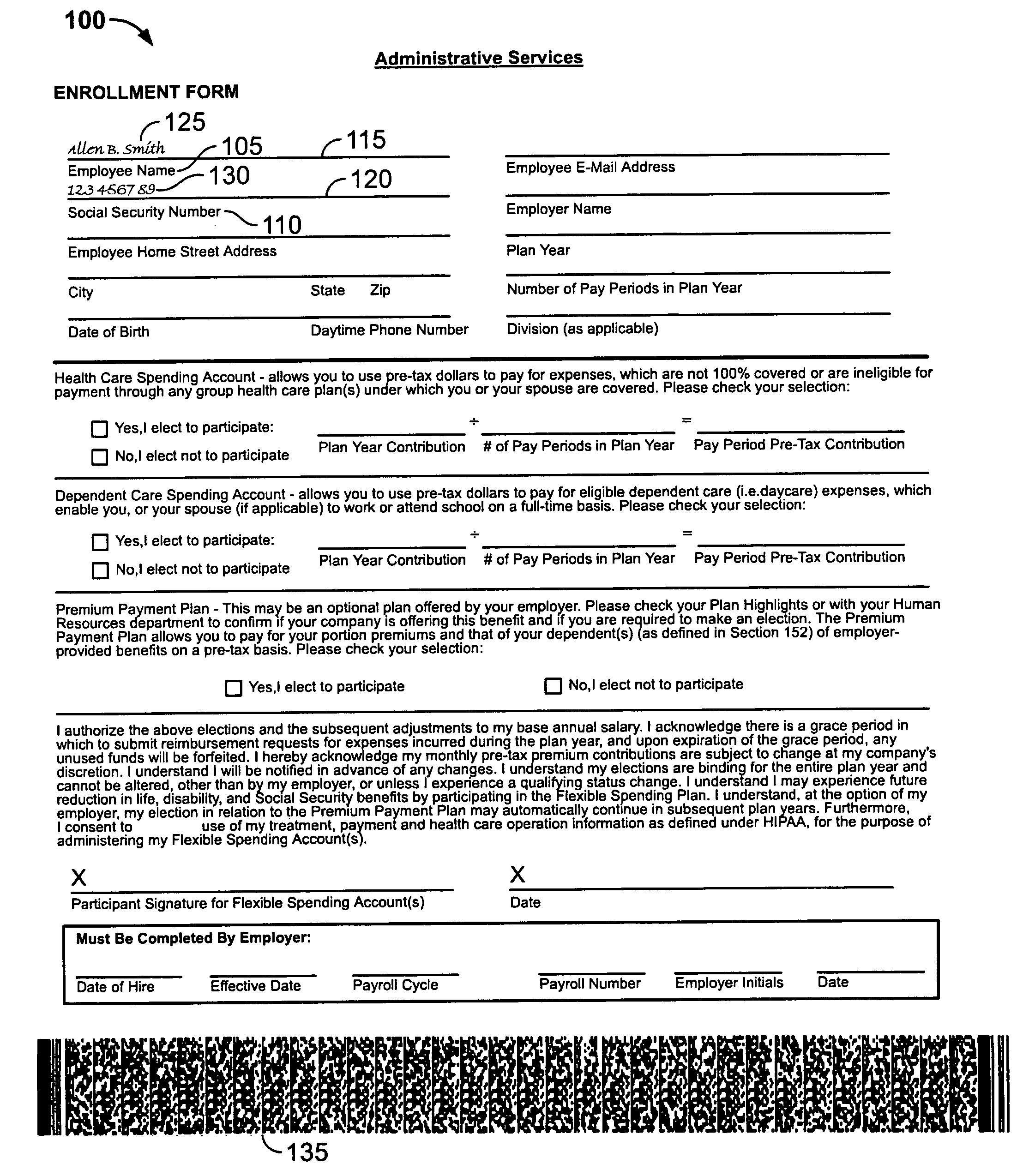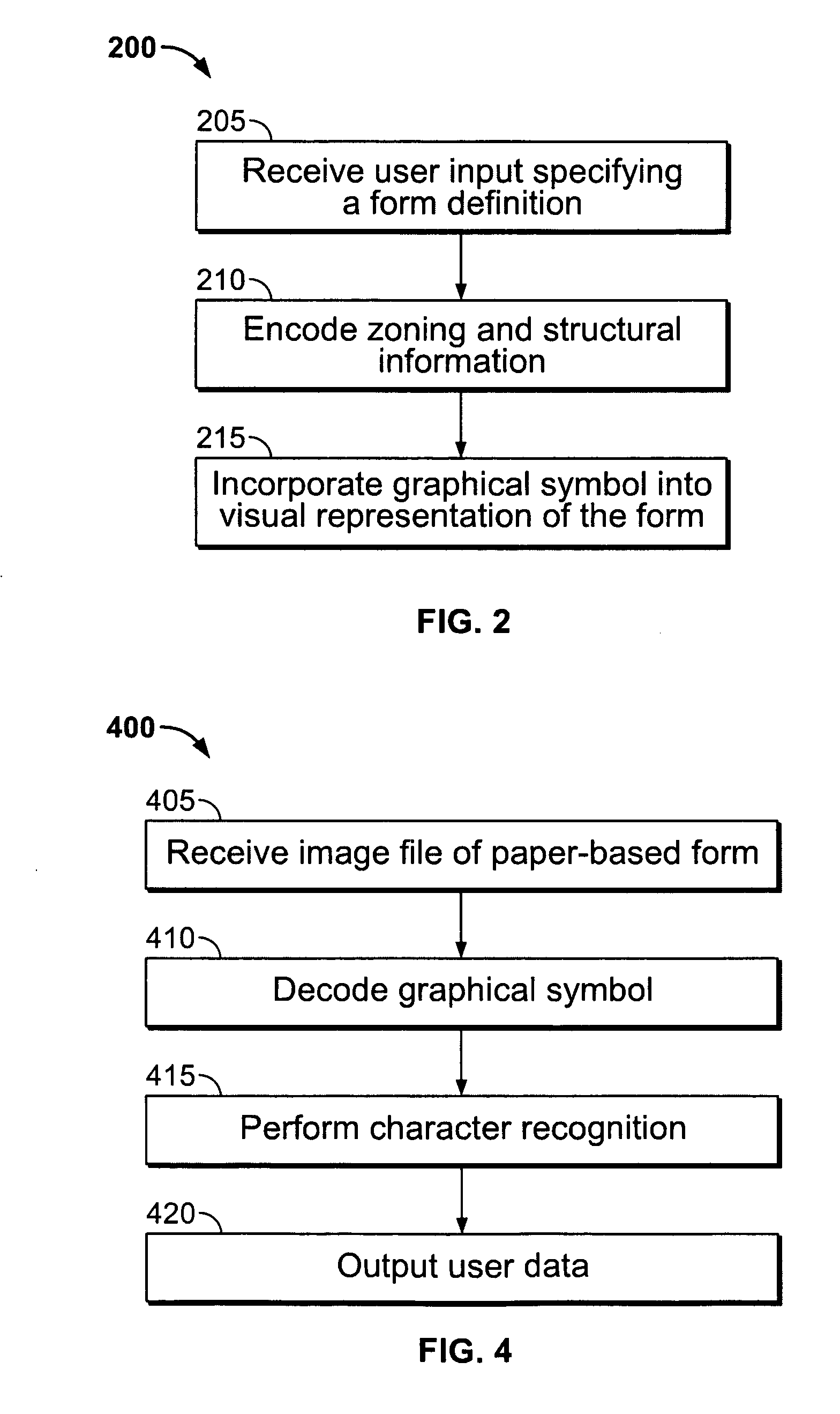Self-describing forms
a self-describing and form technology, applied in the field of self-describing forms, can solve the problems of labor-intensive and therefore expensive and time-consuming tasks
- Summary
- Abstract
- Description
- Claims
- Application Information
AI Technical Summary
Benefits of technology
Problems solved by technology
Method used
Image
Examples
Embodiment Construction
[0020]A form for collecting user data is created, including one or more data fields where a user filling in the form is expected to enter the user data. An author of the form defines zoning information identifying locations within the form of the one or more data fields, and therefore locations where user data can be expected to be found by an OCR / ICR program extracting the user data from the form. Optionally, a form author can further specify structural information that can describe the form, the data fields and / or relationships between the data fields (other than the location of the data fields, which is specifically referred to herein as zoning information). The zoning information, and optionally the structural information, is encoded according to a symbology that is defined by rules for encoding zoning and structural information in a medium in which the form will be presented to a user. The encoded zoning and structural information (i.e., an encoded representation of that inform...
PUM
 Login to View More
Login to View More Abstract
Description
Claims
Application Information
 Login to View More
Login to View More - R&D
- Intellectual Property
- Life Sciences
- Materials
- Tech Scout
- Unparalleled Data Quality
- Higher Quality Content
- 60% Fewer Hallucinations
Browse by: Latest US Patents, China's latest patents, Technical Efficacy Thesaurus, Application Domain, Technology Topic, Popular Technical Reports.
© 2025 PatSnap. All rights reserved.Legal|Privacy policy|Modern Slavery Act Transparency Statement|Sitemap|About US| Contact US: help@patsnap.com



